Text
Film Commentary: “Sugar Hill” (1974) starring Marki Bey in a unique anti-hero performance

Sugar Hill came out of an era where there was a LOT of changing ideas about race, gender, and power dynamics. The civil rights movement had taken place, the Black Power movement, the women's liberation movement. The oppressed all around the country were throwing out the old constraints, challenging the old prejudices and repressive way of moving, and this shift in society was being reflected in a BIG way in cinema. One of the emerging aspects of social change was the Blaxploitation movie trend that started in the early 1970′s and brought forth now-beloved classics like Blacula and the Shaft series. Things were beginning to reflect a new way of viewing the world and members of an historically victimized community were being shown in a wide variety of bold, heroic, sexy, take-charge and all-around bad-ass ways. One of the earlier 'quiet revolutions' in cinema was the race film era which started in the earlier part of the 20th century and stretched all the way to the 1940′s. Many of the films made in this period were created by the cinematic visionary, novelist and Black filmmaker, Oscar Micheaux (I highly suggest his movies!). The strong focus then was on middle-class and wealthy representations of African-American life in order to challenge racist, false and mean-spirited caricatures of Black people's images, ambition, and place in society. However, when the '70s and Blaxploitation films rolled around, Black people from MANY corners of life-- the urban, the fighter, the vigilante, the reporter, the detective, the cop and in 1974's underrated horror classic, Sugar Hill, the female boss of an army of the undead, were put on center stage, and man was it a a unique time for cinema. Not to mention, a whole lot of fun!
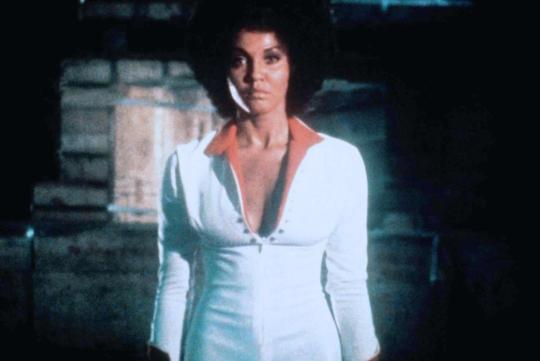

Voodoo has been used very frequently in the horror genre, an ongoing theme of retaliation used by the persecuted, that has usually had all sorts of racial and cultural symbolism attached to it. In Sugar Hill, it is used as a tool of achieving justice by a young woman and brand new club-owner, Diana 'Sugar' Hill (played by the remarkable Marki Bey), who would otherwise be ignored and dismissed by the authorities and the whole unjust, racist, sexist set-up. Diana, a photographer in Houston, Texas, is a woman alone after her boyfriend Langston is killed by gangsters headed by a ruthless boss called Morgan, who are after control of the club he owns, which now passes to her possession after his death.
Langston is brutally murdered, beaten to death, and Diana goes vigilante. How is she doing it? Through supernatural means of course. And she does not fail to exact the vengeance she feels she is due, with the powerful spirit, Baron Samedi, lord of the dead (played by the theatrical, scenery-chewing and utterly fabulous actor Don Pedro Colley who became somewhat of a horror/scifi legend himself in other ‘70s films like Beneath the Planet of the Apes and THX-1132).
Helping her every step of the way is Mama Maitresse, played by the experienced actress Zara Culley in a pivotal and genius performance.


Diana and Baron Samedi along with a hoard of blood-thirsty, yet totally controlled zombies, go after the gangsters responsible for the death of her beloved in increasingly grisly and campy ways.
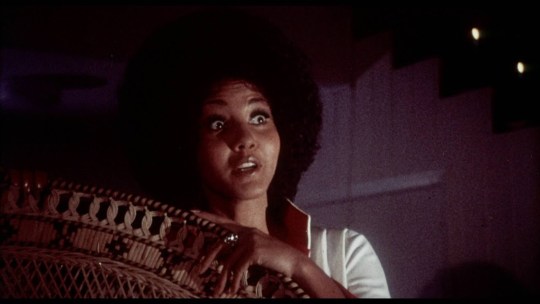
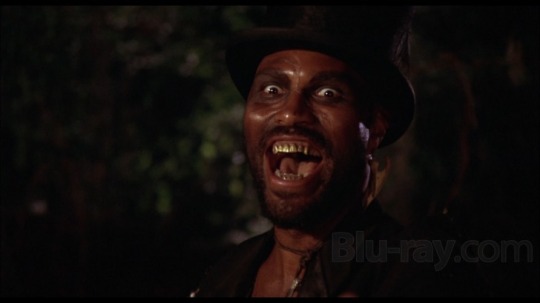
Diana's mission of vengeance is peppered with sharp and memorable one-liners, as in one scene where one of the gangster henchmen is tossed into a pen of some VERY hungry pigs, "I hope they like white trash!" and it is obvious that Diana is written very pointedly as an anti-hero but with an emotional core. She is slapped around by several members of the mostly white gangster crew, called racial slurs and degraded, particularly by the crime boss’s ragingly insecure and hateful White girlfriend who *violently* tries to make Diana feel two inches tall. Which by the way is a scene that Diana wins in her own self-defense.

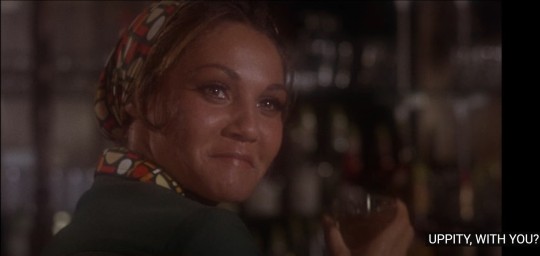

Ooooh! Put some butta’ on that burn.
None of this rack of bigots and thugs know her true secret weapon however, and it is with this supernatural power that she takes control of her life and makes those who brutalize her feel the pain of their own actions. It is quite honestly, a fascinating representation of the rage of an oppressed woman, simply in horror form, and with a bigger budget and more nuanced writing, it might've been a significant horror AND social commentary work on racism, misogyny and and how they meet in the middle for women of color like Diana, and the lack of respect she receives in her interactions with the powerful White people surrounding her. However, the 1970′s was so often the era of quickly cashing in on movie trends, so the depth that could've been here, is not as present as it could've been, with occasional flashes of brilliance however.

Strutting and swaggering through dark corners, she wields her pack of shambling assassins with a cool authority like a '70s mob boss of the underworld. With a police detective (played by Beyonce's step-daddy, the seasoned character actor Richard Lawson), slowly beginning to get hip to her diabolical plans, she stays in control, not even breaking a sweat as she lures the last (and most important) person responsible for her fiance's death, the White kingpin Morgan, to his demise.


The cool thing about this movie is the utter gutsiness of it! It just doesn't give a damn. It's pure gloriously campy entertainment from beginning to end, combining a whole bunch of horror and blaxploitation elements in the mix--from the tried and true voodoo and walking dead tropes to taking Marki Bey and trying to fashion her into a horror version of Pam Grier who was herself at the height of her popularity during this time. But I cannot stress enough how much Marki Bey's interpretation of a modern woman deeply enmired in ancient rituals, lifts what could've been a formulaic flick into something dynamic and exciting! She wrestles the movie away from the routine and through the sheer force of her feisty, charismatic performance, it becomes a stylish thriller instead of shlock like many of the B horror movies from the decade. And while showcasing Bey's character Diana in a genre that had commonly overlooked Black women's presence, it also showcases a woman in charge taking action outside of what had been the usual moves assigned to women in horror, a genre that so often had assigned females to being trapped in mortal peril, either ending up as targets or weak characters needing to be rescued. It’s a presentation that becomes doubly significant because of what race and gender bring to the story.
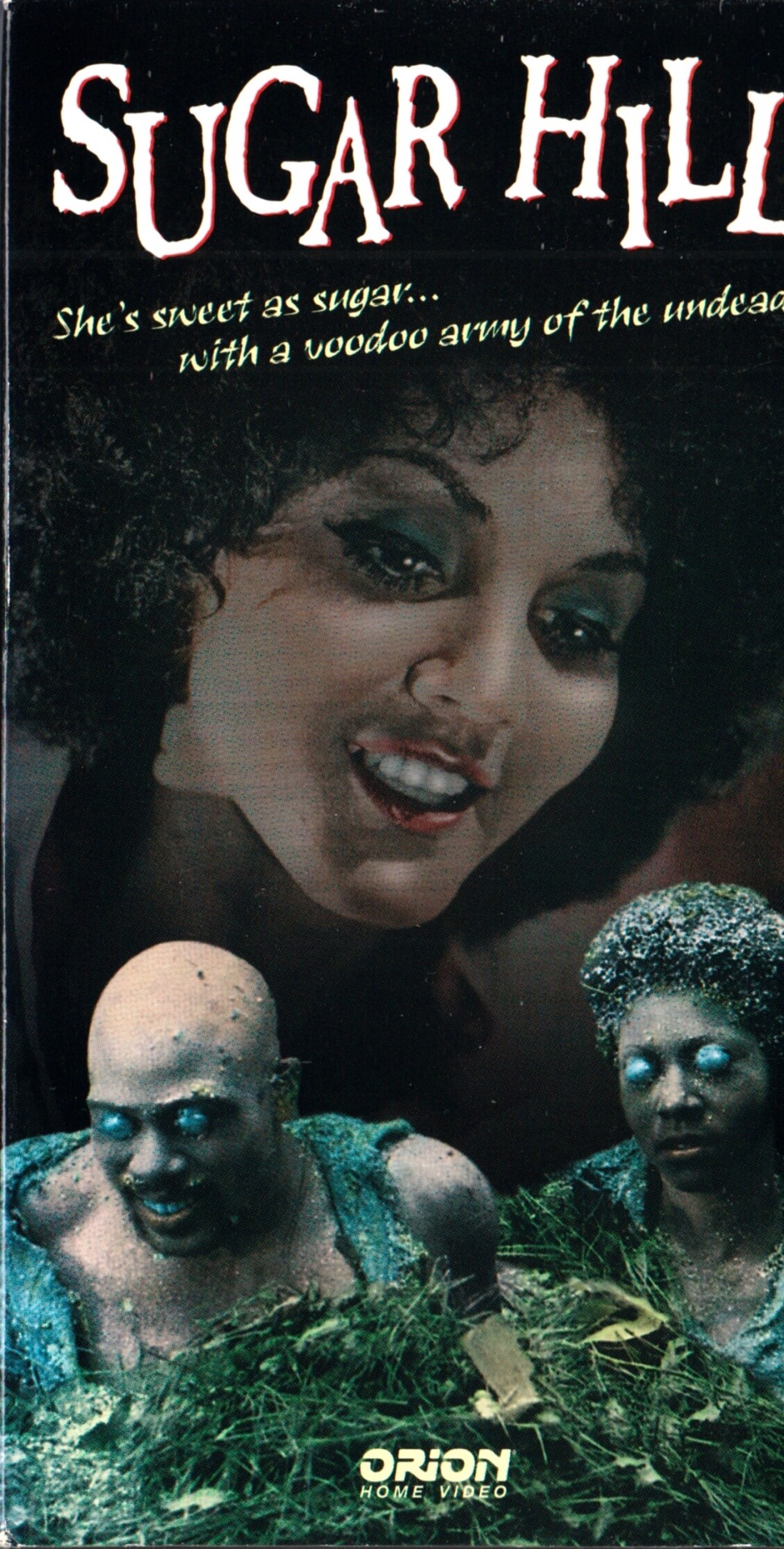
All of it has an organic, even gritty flow, even within the context of the campiness and pure outrageousness!
In further exploration of the racial, gender and even color dynamics of Diana's presence as a horror movie anti-hero, it gets even more complex, at least to me, when you go digging deeper. The casting of a more ambiguous, lighter skinned actress of color amidst the violent themes of these specific types of voodoo rituals and revenge shown, I don’t really feel was all that random. There's been a curious depiction of association of Black women with voodoo in horror movies to the point where it's become a genre trope. And from my own personal observations as a horror fan and a woman of African American heritage myself who has tried to pay attention to representation particularly in the horror genre, it seems that it's also at times been closely associated with women of mixed heritage in both fiction and screen...call it the "Marie Laveau effect".

(Films that are examples of this stretch all the way from the 1930′s like Ouanga: The Love Wanga starring Fredi Washington, Chloe: Love Is Calling You starring Olive Borden and The Devil’s Daughter starring Nina Mae McKinney to 1987′s Angel Heart starring Lisa Bonet.
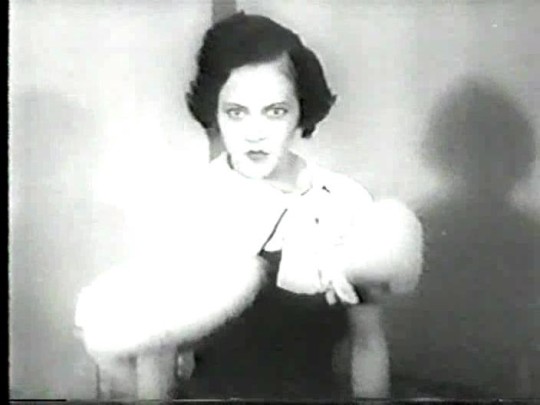
(Fredi Washington in 1936′s Ouanga)
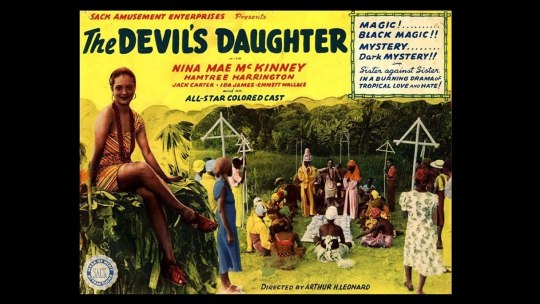
(Nina Mae McKinney in The Devil’s Daughter)

(Lisa Bonet in Angel Heart)
There seems to be some type of cinematic history where mysteriousness, seduction and intrigue becomes so intense, it damn near tips over into the supernatural with ambiguity and “mixed-race-ness” in women of color. Perhaps it’s been a subtle commentary on the nervousness a racially divided American society has had with even the barest hint of miscegenation--a quiet anxiety with the physical proof of Whites and Blacks having had children together.
History lesson: a large number of Creole families in Louisiana and the Caribbean ultimately descended from the offspring of African women and French and Spanish men. The action of Sugar Hill is set and shot in Houston, Texas and from my own personal knowledge of the Creole community and from family connections to that community, I know many families migrated westward to Texas out of Louisiana years before. Some interesting info on the migration:
In the decade following World War I, thousands of Louisiana migrants with French surnames began moving to Houston, most identifying as Creoles of color. The first wave of migrants came in search of labor. A second wave of migrants moved to Houston after the Great Mississippi Flood of 1927 ravaged parts of Louisiana. They established a community on the city’s north side called Frenchtown.
LINK
So, there could be an unspoken 'Creole' link they attempted with Diana Hill's character in this movie--combining Hollywood smoke and mirrors with this imagery of a specific corner of Black American history and mixed heritage peoples with voodoo magic. If you can get past that somewhat stereotypical aspect though, you *can* still enjoy how Marki Bey the actress skillfully handles the utter and supreme confidence Diana has in herself as a woman entitled to justice, as warped and off the wall as her actions may be.
But off the wall, unconventional and outright crazy WERE some of the qualities describing some of the most fun Blaxploitation films of the ‘70s (Cotton Comes To Harlem was another wild ride).
Marki Bey herself was someone who was beginning to make a splash on movie screens, having previously co-starred in the razor sharp satire on race and *attempted* gentrification called The Landlord where she played a Biracial go-go dancer Lainie (hey, it was the ‘70s) who has a romance with an earnest but clueless rich White guy, played by Beau Bridges. Bridges becomes the brand-new owner of a tumbling down inner city apartment building to unexpected and hilarious results with Lainie falling deeper and deeper in love with him, despite the barriers his snooty uber-WASP family tries to put up.
She was a refreshing personality in the acting world--talented, feisty and brimming with charm! She also had a sophistication that worked really well to underscore the manic intensity of Diana in Sugar Hill. It was a fascinating juxtaposition of elegance with menace. Charm with *albeit justified* venom.


As I mentioned before, with a tighter screenplay, it could've been damned near a masterpiece, maybe even approaching the level of one of the old Universal horror movies. But as it is, it's a rollicking good ride of thrills, chills and gore, with an interesting social message.
Marki Bey left the acting world after her cluster of appearances in the 1970′s. Her heyday was during this very exciting period of people of color throwing away the discarded assumptions of their humanity and making new ground for a bold, fresh kind of filmmaking that broke all the rules and created new icons.
Sugar Hill may not have reached the level of fame or artistry within the Black horror genre as a Blacula or even Ganja & Hess, but not only was it entertaining as hell, it was also a cool time capsule of attitudes, style and personality that will never come again. A preserved moment in cinematic and African-American history. And for that, it's definitely worth the watch. Enjoy!
Full movie for free on YouTube:
youtube
#marki bey#sugar hill#classic film#women in film#old movies#classic horror#horror movies#1970s#Blaxploitation#campy movies#women of color#black women in film#Black actresses#Biracial actresses#Texas#Divas Damsels & Smudged Mascara#movie review#film commentary#blogging#film bloggers#movies#old Hollywood#classic Hollywood#Black cinema#Black films#classic movies#classic actresses#thrillers#horror
41 notes
·
View notes
Text
Revisiting The ‘Zone: Classic Female Performances in my Two Favorite Episodes, “Living Doll” & “The After Hours” & Life From the Inanimate
The surrealism of Twilight Zone has always been a quality of magic and artistry that has caused me to be passionate about the genius of this series. I've enjoyed pretty much every single episode ever made, some I absolutely adore, and several episodes that to me have highlighted some of the best writing, acting, direction of the entire series has been Living Doll and The After Hours.

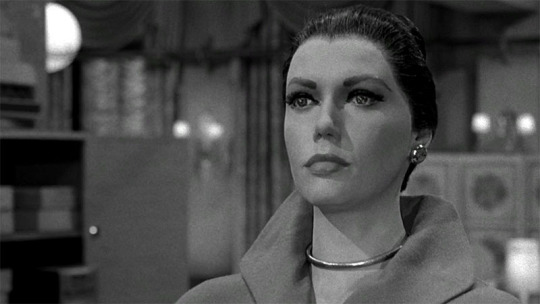
Both episodes revolve around the "reanimation" of inanimate, human-like objects, explores unsettling undercurrents of human behavior with women/girls at the center of fear--with Living Doll, tumbling into a darkness, a terrifying question that to the story's credit, *refuses* to be answered! These favorite episodes of mine perfectly represent the haunting qualities that made "The Twilight Zone" something unique that lingers on our minds decade in, decade out, has us analyze, question, debate the meanings and messagery of the show that shot to the pinnacle of 20th century pop culture and helped fuel a country's imagination.
With Erich Streator, his wife Annabelle and his little step-daughter, Christie in the episode Living Doll, the background's set for what is at first glance, a wholly normal landscape which is to be twisted into a distorted nightmare. The all-American suburban home and family is turned into a place of shadow and fright. Things are said that are not meant to be said, from a thing that should not be talking, and it is all rooted in the emotional abuse of a man towards his family, especially a little girl who has no defender or protector except a somewhat weak-willed mother who has mistakenly clung to an embittered and toxic man. A doll called "Talky Tina" brought home as a gift of comfort for a hurting child, suddenly transforms into a menace as she starts to insult Erich the minute he is alone with it, then swiftly begins to threaten his very life, terrorizing the angry and confused man over the course of only one night.


What I've always loved about this episode was the "unreality" of it--it plays with the viewer's mind. Is the doll Tina somehow a supernatural friend and ally to the child, coming to her rescue in some strange, uncanny way? Or (and the ending of Living Doll REALLY makes you wonder about its intentions), is "Talky Tina" a conductor of energy, a vector of chaos, a strangely sentient object with the sole purpose of disturbance, chaos and even violence? The writing and performances in this episode are pitch-perfect, the mother Annabelle played by the actress Mary LaRoche and her daughter Christie by Tracy Stratford. Annabelle is a woman who represents a LOT of women throughout the years who've landed in marriages that have quickly turned sour because of the internalized rage of increasingly spiteful men. With Erich (Telly Savalas in a terrific performance), he's allowed his own personal angst on his inability to father a child, to turn him against the people he should be loving and protecting. Annabelle keeps up appearances of the domestic, playing house with a man who has repeatedly shown that he not only not knows how to be a father to the child he already has, his step-daughter, but does not know how to be a husband.
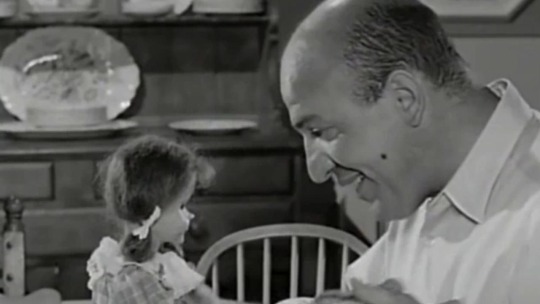
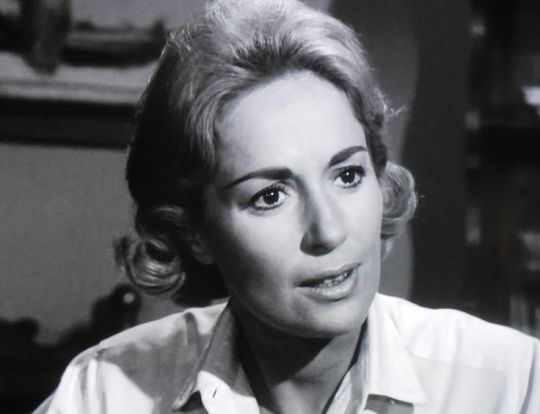
Running through this episode is the retaliation Erich Streator receives from a pint-sized foe, a female fascimile--something that reverses the power dynamics for the mother and the child. BUT (a big but), the brilliant part of this episode is that appearances may be deceiving and the viewer's expectations just may be subverted. What happens at the end of this very scary episode to Annabelle, Erich's wife and the mother of the little girl this doll is supposedly trying to shield from harm begs the viewer's question as to exactly what the hell is the meaning of this madness? Living Doll was a story that I thought was told with an edge that showed itself in the strongest, most haunting TZ episodes. It didn't shy away from diving head-first into the spooky pool and challenged the viewer as to what they thought was right vs. wrong. I've always wondered about whether Talky Tina was meant as an instrument of evil or whether it was some type of 'avenging spirit'. Even MORE creepily, could a regular little doll somehow have been picking up the angriest and most bitter parts of both the mother AND the daughter, channeling that into destruction? Could it have been a conductor of their subconscious cries? Wisely, we're left wondering and that is what gives this episode its power! The last scene involving Tina and Annabelle seems to unravel everything that's been happening in the house, re-adjusts what you think you've pretty much figured out. I also think this episode was a profound commentary on family dysfunction and bullying. What's really at the center is an innocent kid being emotionally tormented by a man she tries to reach out to in her own small way (calling this very un-fatherly man "Daddy" even though he does not necessarily welcome it and doesn't show her any real love and affection, in fact angrily yelling that he "is NOT her daddy" in one particularly nasty scene). A bullied girl, by some unknown energy of the universe, is prevented from being the victim in a time period and society where some of the most helpless victims were women and girls, caught in a trap of abuse and emotional neglect. I think Living Doll was very bold in how they approached this subject considering the constraints of the period and how a deeper message could be expressed to the audience. Rod Serling's magnificent series showed insight and sensitivity to an experience a LOT of women and children were going through. The episode managed to tell a freaked-out story but also shined some light on the cruelties of abusive husbands and fathers, how they could gradually rip apart the seams of a family until there was very little left.

Now in my second favorite episode, The After Hours, there's also a kind of a challenge to the existence of someone--a young woman locked into a dark and abandoned department store. She's not a victim of abuse like the little girl Christie or mom Annabelle, or the target of retaliation for cruel actions like Erich, but a little like him, frightened and confused and overwhelmed by forces beyond her understanding coming outta the artificial, the uncanny valley human-like form.

She's Marsha Hunt (played by the EXCELLENT classic actress Anne Francis who had previously starred in the scifi epic Forbidden Planet), and she's simply there a few hours earlier in the afternoon to pick up a special gold thimble for her mom's birthday but she doesn't find anything normal on what's supposed to be an every-day shopping trip, only confusion, an enigmatic and mysterious saleswoman who takes an interest in her, asks her somewhat invasively about the "happiness" of her personal life and appears out of nowhere on what appears to be an empty floor (the clerk played by Elizabeth Allen, cool, imperious, glamorous and entirely unsettling). Later Marsha passes out from the shock of actually seeing this rather spooky employee on another floor as just another one of the store's countless mannequins and wakes to find her entire life in question, pursued by other mannequins who call out to her, their voices coming out of their eerie, frozen faces tormenting the young woman, shoving her into hysteria!
The first time I saw The After Hours, I felt that this was a very special episode and was bound to have a hell of a twist, something this series was always famous for, and it did not disappoint! Marsha's a character who we take for granted as the victim, a hunted figure whose escape from this store o'horrors we're rooting for. We look at the events through her eyes, but in the process, we miss little clues, signs, even body language and mannerisms that point to something far more bizarre and it is BRILLIANT how Francis was cast as a woman whose identity is *subtly* shown as a construction.

Marsha wanders into the store, frequently chatters about her mother and the thimble gift she's buying for her, in one scene getting upset, almost in an out of proportion way, about the inferior quality of the item and ranting about the weirdness of the mystery clerk to who is just supposed to be a random elevator man taking her to the floors. It could be easily dismissed as the chatter of an excitable girl, but looking at certain scenes more closely, it's almost as if there's a message being conveyed in these tiny little details. Marsha has a relentless INSISTENCE about her. From the moment she starts having interactions with the people in this store, she is letting everyone know about *exactly* who she is (a caring daughter), exactly what her purpose is (birthday present for mother), exactly what she will and will not accept (odd salesladies), exactly how willing she is to demand answers over what many would view as a relative triviality. Francis colored her character with dimensions that speak to the anxiety of Marsha yet she has no huge reason, not really, to be so anxious, almost to the point of desperation, in the first place. That feeling of misalignment, out of wackness, this subtle lack of emotional adjustment strikes you about Marsha as the story goes on this quick spiral into weirdness.

The ending is one of the BEST in the show's history, an episode from its first season that helped to cement its status as entertainment that packed a wallop and delivered that WOW! factor in a huge way. Marsha is stuck in that store. The mannequins have got her, her previous anxiety ultimately confirmed.
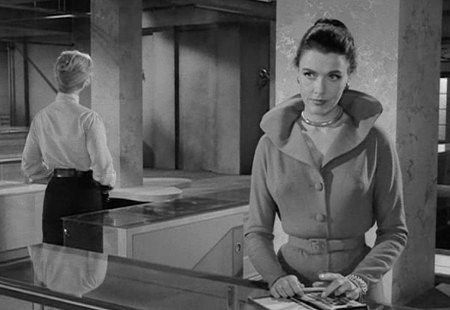

The chills running throughout The After Hours is something that has lingered in my mind since I saw it so many years ago as a child and revisiting the episode this New Year makes me wonder about the message it was trying to present. Is it just possible that the moral of the story is to not take your life and the entirety of your uniquely human experience for granted, that the definition of existence with all the little details that comprise our collective journey on earth, are meant to be savored instead of "dealt with"? That life is to be treasured, not just gotten through? That the gift we're given is not really the opportunity to get power, or have a lot of 'stuff', but to simply BE, savoring the sunlight on our heads and the breath in our nostrils? The ending of just what the mannequins want and what Marsha herself has cherished seems to give some strength to that theory. Also, if you wanna have even more fun with this episode, looking at it from a uniquely female perspective, the themes of a woman's independence being captured and suppressed, is very profound. It's pretty likely that Serling was not necessarily approaching the story from this angle, but as art is open for interpretation, it can always be exciting to analyze his work from multiple points of view! Marsha represents the young, modern independent. She is free to explore, challenge, demand, investigate! But this freedom is cut short in the end and she becomes another artifice, a female figure that has been shaped into stillness, forced into silence, and even the void. As a woman who always loves searching for real, potential and even the "who the hell knows?" hidden meanings of classic film and TV, especially about women's characterizations, it's pretty fascinating to think even for a moment that this could potentially be interpreted as an obscured commentary on the emerging freedoms of women of those times and how external forces could and would cut into them.
Or maybe, kind of like Living Doll, it was solely about the fictional exploration of an unknown energy slipping in and out of the world, connecting with humans’ reality through representations of their own human image--a quietly explosive collision of the real and substitution of the real.
Whichever theory you believe, it's undeniable that The Twilight Zone has reached out through the span of years, leaping into our hearts and minds. The inspiration we've received from this sublime corner of retro pop culture has been almost immeasurable and the performances from the entertainers, many of them fiercely talented, charismatic, and iconic actresses, have been emblazoned into the national consciousness! I can think of few other shows that's not only as THRILLING but emotionally and intellectually moving as The Twilight Zone. It's the gold-standard of horror, scifi and fantasy! The layers to these episodes seem in many cases, to go very deep. I can return to episodes I've grown up watching and see new dimensions, new aspects, other sides to the stories that I hadn't noticed or even understood before.
All I gotta say is...THANK YOU Rod Serling!

#Divas Damsels & Smudged Mascara#Twilight Zone#classic TV#women in television#classic actresses#Rod Serling#Anne Francis#Talky Tina#Black and White#spooky#creepy#Twilight Zone marathon#science fiction#scifi#thrillers#supernatural#unsettling#bizarre#strange#unexplainable#speculative fiction#Telly Savalas#vintage#retro#old TV#anthologies#series#entertainment#1950s#1960s
9 notes
·
View notes
Text
Actress Spotlight: Susanna Foster in “Phantom Of The Opera”


Back when I was a junior horror fanatic, one of the first films I saw of the genre was the horror extravaganza from classic Universal, Phantom of the Opera. I must’ve been all of seven or eight years old and I was hooked! It was a gorgeously done early version of the classic Gaston Leroux story (later made infamous by Andrew Lloyd Webber's 1985 musical) about a man in a mask, a beautiful opera singer, and the phenomenal lengths he would go to make her a star of the Paris Opera House.
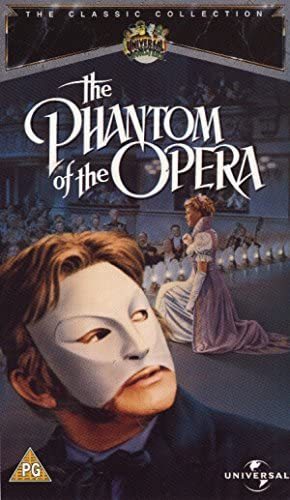
The original early ‘90s VHS cover art I know and love
The 1940′s was a golden era for Universal. They were known for their all-star horror movies, something that got started back in the early 1930′s with legends such as Bela Lugosi as Dracula and Boris Karloff as Frankenstein. Horror was a movie genre in the process of being refined and perfected. The stars who populated these movies were experts at combining the danger with the humanity, such as Karloff, Claude Rains (starring here as the Phantom), Lon Chaney, Jr. It was a bit of controlled "danger" with the lurking cinematic monsters in the shadows, whether it be a man stitched together with disparate body parts, a musician driven mad and into the sewers, or an English aristocrat transforming into a wolf at the full moon and snarling for prey in the fog. Universal's horror was expertly done movie magic and a unique form of escape catering to the darker edges of imagination, propelled by the industry's fantastic talents.
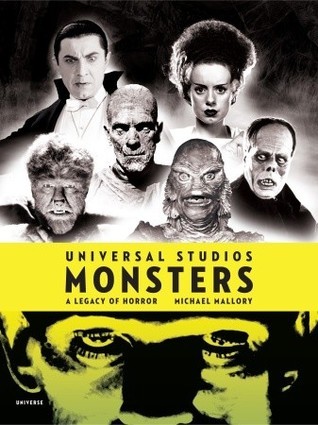
Book Info here
But with many horror movie villains or antagonists, you needed a starlet opposite him! The ones who are truly remembered as formidable talents of their own are women who gave unforgettable performances in film history, greatly respected by the fans many years later. One of my personal favorites of these actresses was the talented Susanna Foster.
Born Suzanne Larson, Susanna Foster came about in a unique period in Hollywood history where young women who were double talents (actresses and singers), were being especially pursued for their skills and transformed into stars by the old studio system. Her rivals at the time were girls like Judy Garland and Deanna Durbin, entertainers who were blazing a path for themselves in a variety of popular musicals and comedies and for rare stars like Garland, a legendary career that encompassed everything from drama to live concerts.
Susanna Foster was one of those singer/actresses and began appearing in movies as early as fourteen years old, such as 1939's The Great Victor Herbert.
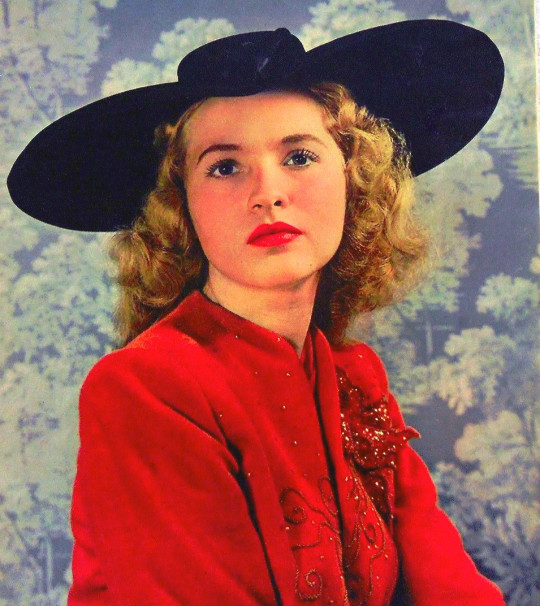

When she was only nineteen years old, she did the film that she is most well known for, the character of 'Christine DuBois', the young opera singer whom the Phantom is determined to make famous at ANY cost, in the haunting and exciting 1943 epic Phantom of the Opera.
You can tell when you watch the first few minutes of Phantom that a lot of talent and attention to detail was put into this production. Claude Rains as the 'Phantom' gives intriguing dimension to the role, infusing a great deal of humanity and heart to a character who could’ve easily been turned into a cheap villain. As Erique Claudin, the violinist who becomes disfigured through his own violence and frustration, he becomes a man who latches on to the one person who makes him feel that his existence still has meaning even though he has sunk to the lowest (literally AND figuratively) part of his life. Susanna Foster plays the woman Christine whom Erique falls into a deep obsession with, a very talented opera singer whose skill he is fanatically determined to foster and push to center stage.


Christine is a rising soprano who's caught in mysterious circumstances between a man (Rains) whose madness has caused him to fixate on her because of what he feels is her greatness. Susanna gives vulnerability yet kindness and strength to her depiction of a woman who finds herself caught in the Phantom's path of increasing mania. She is graceful and sophisticated but at the same time, brings a genuine feeling of warmth and compassion to the role, grounding the more colorful, melodramatic qualities of the film, making the production a true delight to watch! She skillfully balances the personality elements in the role, really understanding who Christine is, the kind of lady the Phantom has dedicated himself to, albeit he has done so in an unhinged way. Christine is a refined performer but still a humble lady, grabbing the audience's empathy and identification with her right away.
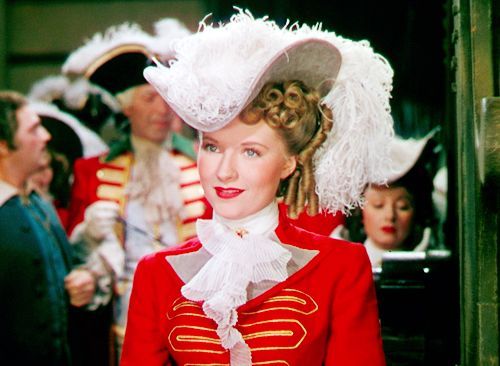

There've been a great many adaptations of Leroux's story throughout the years, of course, the most famous being the Andrew Lloyd Webber musical. The feeling and personality of the characters have been interpreted in different ways but it’s not at all difficult for me as both a classic film fan and a Phantom fan, to choose which one most speaks to me, has encompassed everything of what I feel is the heart and soul and inherent sadness of the tale. This one wins out.

Also, the aesthetic of the film itself is stunning! The sets and costumes (the former designed by Vera West) are nothing less than what I'd describe as utterly lavish; sumptuous, eye-popping, but also dark and elaborate creations that leap off of the screen, emphasizing the larger than life quality of the entire production from the beaded gowns of the Paris Opera House to the desolate sewers of Erique Claudin's lair. The film is steeped in Victorian gothic atmosphere which transports the viewer to a long ago time and place, a brilliant piece of retro movie magic!



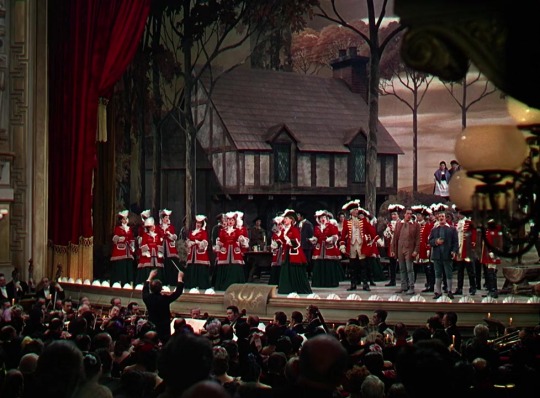
I often feel that while a story or adaptation itself can be timeless, the style in which it's taken from the words on paper to its full visual height onscreen is of the utmost importance. Universal in the 1940's was investing a lot into its horror and really taking the genre to new artistic heights. The colors were never brighter and there was, in my opinion, never so much passion and spirit poured into the telling of this tale than with this *somewhat* underrated version. Everything was of the highest quality--there would never be another Susanna Foster, Claude Rains, Nelson Eddy (as the romantic male lead Anatole Garron, who is in love with Christine) or Arthur Lubin (the director of Phantom). The music itself, composed by Edward Ward, was another star of the movie, every bit as important as the action onscreen, performances and costumes. It breathed a new life into this gothic tale.

Lullaby Of The Bells--listen here!
Foster herself gave a freshness and added dimension to the character of Christine. Looking back on the film, I also noticed something I really enjoyed about her interpretation; how natural and flowing her performance is in what could be considered quite a difficult part. Her Christine is strong without being strident. She is a capable and intelligent woman, self-possessed but down to earth. She doesn't fall into the hysterical or histrionic cliche' but keeps the character at a steady and even keel, even while encountering the shadowy enigma of the man who has invaded and is attempting to control her life and ambition, albeit for his own positive but misguided reasons.
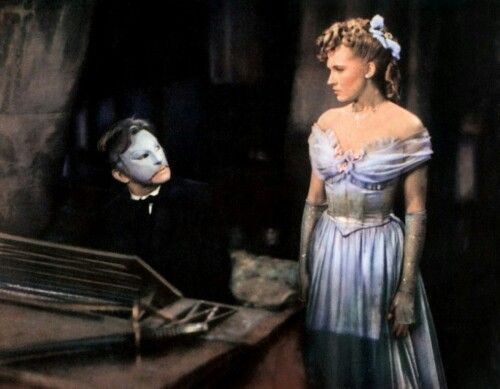
I cannot stress enough as well the authenticity Susanna's voice lends to the role of Christine DuBois. She really makes you understand why the Phantom believes in her so much! By selecting a woman with such strong and exuberant operatic talent, Universal created an unforgettable female protagonist in this version. With ‘Christine’, it is actually Foster who has much of the emotional weight of the film on her shoulders. Without a genuine and believable Christine, the Phantom’s quest falls flat. She does not fail in making the audience understand why the Phantom is so entranced with her talent and charisma. She brought exceptional screen presence to this film, carrying with her a beautiful, strong and clear voice that pierces through the celluloid and within the story, the tortured spirit of the lonely Erique Claudin.


Originally made famous in Hollywood by the iconic Lon Chaney as the anti-hero phantom and Mary Philbin as Christine Daae in 1925, Phantom of the Opera has been a story that's both captivated and thrilled the movie-goer for decade after decade, with different styles and vibes, new Phantoms and Christines and many more lavish productions to enjoy. However, the chemistry between Susanna and Claude is the most realistic and empathetic to me.
Susanna experienced a time in the spotlight with Phantom, following it up with a starring role in the intended sequel to Phantom called The Climax in 1944, opposite Boris Karloff. Intentions were not the result however, and the film being the continuing story of Christine were scrapped, it becoming something different altogether. Susanna's combination of voice and acting talent were something special nonetheless and propelled her to the spot of legendary leading lady, despite her small filmography. She had a life filled with creative, professional and personal ups and downs, leaving Hollywood and the filmmaking world behind altogether to pursue an operatic career, touring with her husband in the early 1950′s. But her experiences were bittersweet...


After a short but successful career in the movies, her singing career became her main focus and she toured several years later with her husband, Wilbur Evans, who was also a professional opera singer. The days of the studio system and stage were put behind her as she worked to take care of her two sons in New York City over the decades, and her family went through their own journey and personal struggles throughout their lives.


Screencap taken from a rare 1985 interview where Foster discusses her life & career, financial difficulties, and her decision to leave Hollywood behind
Foster passed away in 2009 but the memory of Susanna Foster's singing voice and luminous screen presence continues to live on in the world of celluloid and the hearts of classic film fans.
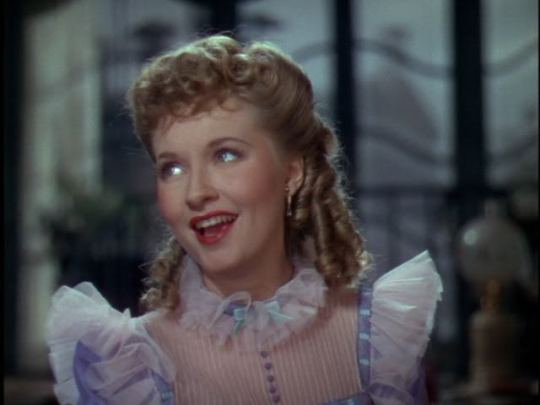
This production of Leroux's epic romantic tragedy reached the finest level of performance and cinematic artistry. Susanna Foster and Claude Rains as Christine and Erique were immortalized beyond even the trappings of the Universal horror spectacular. If you really look at the story, they were simply two individuals each dedicated to their craft of making music and longing for their art to push them towards greatness. Erique Claudin was a man who had been backed into a trap based in his own desperation and longing, his mind broken under the pressure of wanting something *and someone* so passionately (fame as a great composer and the lady he loved), but never obtaining because of the forces around him. Ultimately, poverty, stress and despair was his undoing, as it is for many talented, downright gifted people throughout the years who've lost out on reaching the potential they’ve deserved. Christine was a creative who DID enter the realm she'd always wanted to be a part of but who was being propelled by forces both within, like her grace and talent, and without, such as Erique’s frenzied determination. This story of Phantom of the Opera is to me at least, the ultimate representation of the madness that can occur when one human being tries to live through another. It is also an examination of when the natural lightness of love morphs into darkness and obsession.

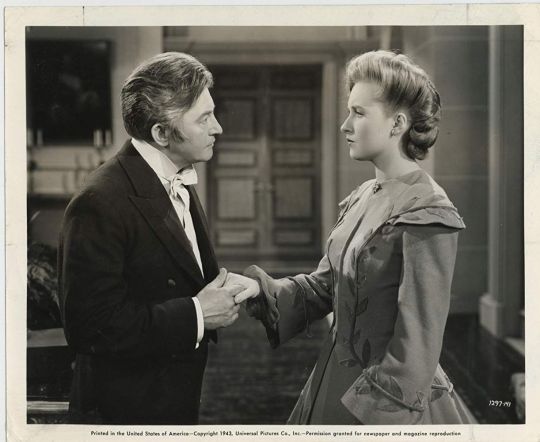
If you're looking for a film that captures your imagination, 1943's Phantom of the Opera is most definitely a worthy way to spend a few hours. I recommend lots of popcorn, a hot beverage, and a thick blanket while you enjoy the dazzling costumes, fascinating story and technicolor glamour and song. Enjoy! 4 stars.
#phantom of the opera#susanna foster#claude rains#universal#universal horror#classic horror#classic film#old movies#1940s#women in film#classic actresses#old cinema#classic cinema#horror#women in horror#women in cinema#great performances#breakdown#music#technicolor#epic#Hollywood films#old hollywood#classic hollywood#Golden Era of Film#golden era#movie review#actress spotlight#commentary#blogging
48 notes
·
View notes
Text
Film Commentary: Betty Field in “Flesh And Fantasy” from 1943

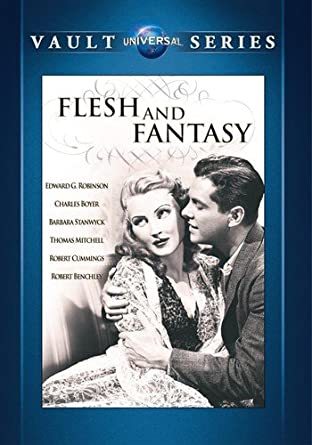
Several hours of a lonely and frightened woman's life in the classic horror anthology, Flesh And Fantasy.
Everyone wants to be loved. And Henrietta, played by the remarkable actress Betty Field, is a woman who feels unloved, unwanted and rejected. It is a night filled with Mardi Gras revelers in 1943 New Orleans. She's a seamstress struggling along in her own private misery, having built up a wall to the people around her. Henrietta blocking out the world, friends and relationships, because she feels happiness has passed her by is represented in the joy of the costumed party-goers milling by her little apartment as she sits in the tiny room, smashing mirrors at her reflection and feeling sorry for herself.

In the midst of the giant party going on, Henrietta, on the brink of ending her life in total despair, is given a second chance at happiness by an enigmatic old man with a kind face who shares some insightful words on her feelings, her state of her mind and her personal torment. They’re so insightful, it's as if he's reading her very mind.


He takes her back to a small, dark shop stuffed with a variety of Mardi Gras masks, of all shapes and sizes, from the grotesque to the gorgeous, making her an offer of picking one mask out of the many, free of charge, but only until midnight that night. His parting advice to her is that “she will learn the truth”. It is a gorgeous mask Henrietta chooses--a beautiful woman's face with perfect features. At last, she hopes, she will be able to catch the attention of the man and neighbor she has been adoring from afar, Michael, a handsome law student, and perhaps finally be able to spend a few precious hours with the object of her desire. What happens with Henrietta that fateful evening, however, will turn out to be a great deal more shocking and unexpected than that. A mysterious force will gently guide her towards reckoning with the self-destructive and toxic behavior she has been showing towards not only other people, but towards herself, tearing her own opportunities and confidence down, which has led her towards self-imposed isolation all based on how much shame she has been made to feel about what she considers her ‘homely’ appearance.
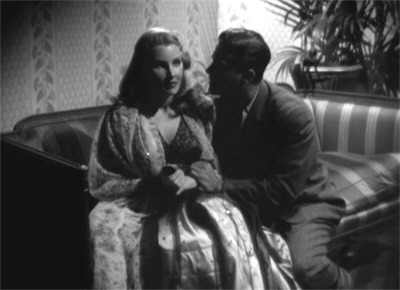
What this segment of Flesh and Fantasy does so well, surprisingly well for the time period, is the uplift and encouragement of an unconventional female character. It explores the pain and conflict of a woman who, because of how she feels society has treated her, has internalized emotional poison and self-sabotage which has translated into meanness towards others, making her unattractive in a far more significant way than the superficial. Bitterness and self-pity has warped the way she moves through life and how she interacts with her fellow human beings, causing a self-fullfilling prophecy of solitude for her. It may be comparable to some of the people floating around the internet right now whom, instead of seeking ways they can be the best person they can be, in whatever way that might be, slump inwards, becoming spiteful and embittered for the things they perceive themselves as NOT having instead of celebrating and focusing on the positive things they DO have. They can eventually transform into the modern-day incels or cyber-bullies who try to hurt others because they can't look past their own hurt, letting it warp their entire personalities. Beneath her own hurt and anger, it turns out though that Henrietta still has the remains of a kind and caring personality buried inside of her, despite the fact that she has let the cruelty of the world become her baggage for far too long.
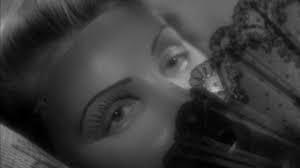
In the end, Henrietta comes face to face with her internal demons and wins the love of Michael, before revealing a shocking aesthetic after the lovely mask is finally taken off...her mysterious benefactor, the bearded man? He has disappeared into the balmy southern night, with a certain twist to his identity being both surreal and utterly fascinating, leading the viewer to question whether he was a spirit, an angel or maybe just a man who felt the need to conceal his own appearance in order to get Henrietta to listen to his words of encouragement without premature judgement.

Flesh and Fantasy came out of an era of brilliant filmmaking, deep and meaningful performances, and phenomenal scripts, and this was one of the best representations of the horror genre from that fabulous decade of cinema. This was only one part of the three-part anthology but this poignant, powerful and haunting tale has lingered with me for over twenty years when I first saw it as a child. It's criminally underrated yet truly unforgettable in its approach to the supernatural and the emotional. 5 stars!

youtube
#flesh and fantasy#betty fields#bob cummings#anthology#horror#supernatural#spiritual#Emotional Performances#women in film#women in classic film#classic film#old movies#female protagonists#filmmaking#old hollywood#Divas Damsels & Smudged Mascara#classic actresses
2 notes
·
View notes
Text
Photo Spotlight on Dona Drake
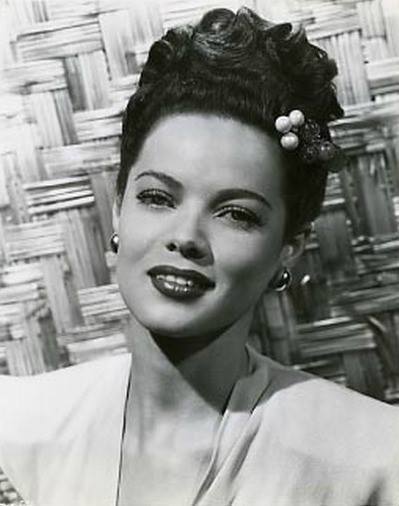



I've been recently learning about a classic entertainer from the 1930s and ‘40s, Dona Drake. Born a woman of African and European heritage called Eunice in Florida of 1914, Dona Drake was a captivating talent and woman who had a unique old Hollywood career because of the intersections of race, color and opportunity (as well as the lack of them) amidst the old studio system.
(Eunice Westmoreland)
is born in Miami, Florida, one of five children of Joseph Andrew Westmoreland of Arkansas and his wife, Novella Smith of Alabama. Her parents are of African American descent. Studio publicity will later claim she was born in Mexico City in 1920.
(Source: Glamour Girls of the Silver Screen)
Life was good for most of Jacksonville’s residents, but not for the Westmorelands, as segregation was strictly enforced and though Dona claimed Latin heritage throughout her personal and professional career, Eunice Westmoreland was negro. Referred to as such in both 1920 and 1930 census records. Both parents were interchangeably referred to as negro and mulatto in the early 1900 censuses.
(Source: TRAVILLA'S LEGACY)
On her own, Dona did a few short films and two-reelers, sang on the airwaves and revved up her image signing on radio. Good friend Dorothy Lamour assisted in getting her signed up to Paramount, where the studio changed her name to "Dona Drake" and built up her Latino background by sending out studio resumes that she was christened Rita Novella, was of Mexican, Irish and French descent and born and raised in Mexico City. Dona's first picture for the studio was in the Dorothy Lamour vehicle Aloma of the South Seas (1941). She then pepped up the Bob Hope starrer Louisiana Purchase (1941) as well as an Arab girl in the Hope/Crosby/Lamour comedy Road to Morocco (1942). Unable to break out of her typecasting as a spicy singing support, her contract was dropped after a sparkling big band singing lead loanout to Monogram entitled Hot Rhythm (1944). Around this time she married the Oscar- and Emmy-winning costume designer William Travilla.
(Source: IMDB)
Drake became an entertainer during a time where there were few chances for women of color beyond stereotype, particularly difficult for those who fell in the racial middle and challenged preconceived notions of Blackness (I touched about this in posts I wrote on other ambiguous actresses of color, Fredi Washington and Nina Mae McKinney).
Dona Drake went through a reinvention of her public identity and screen persona, her original background kept quiet in the attempt to pursue her ambitions, similar to the unfair pressures the lovely Anglo-Indian actress Merle Oberon went through in her own career.
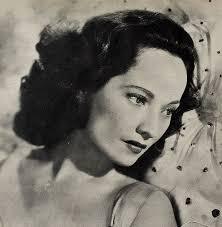
Taking advantage of the blur between racial lines in her heritage, Dona Drake played a variety of roles ranging from Indian to Arab and many more non-white (but non-Black) heritages.


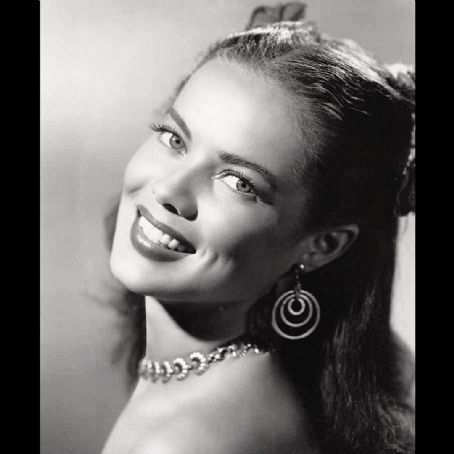
In 1949, she was spotlighted in the Bette Davis noir classic flick Beyond the Forest, as a Native American.


Reading about her life, it becomes clear that despite the stress and difficulties she must’ve encountered regarding the burdens of racism in the film world, it did nothing to dull her exuberance. Watching some videos of Drake shows what an exciting performer she was! A triple threat, singer/actress/dancer, she grabs the viewer's attention the moment she leaps onscreen and sparkles like the star she should've become.
It strikes me how she, like other ambiguous performers of color in this era, were veritably brimming with talent and exceptional skill but constantly had the problem of battling stereotypes and typecasting because of there being such a stark divide between the representation of Blackness and Whiteness onscreen. To be blunt, there simply was very little room for any sort of 'middle-ground' for these performers because of the image Hollywood presented of people of color in comparison to White entertainers.
I definitely want to learn more about her work and probably write a much more detailed blog post on her at some point in the future, examining some of her films. As a film buff and mixed heritage woman of African-American descent myself, these types of intruiging, rarely told Hollywood stories genuinely fascinate me...how many more of these silver screen performers we look at in these old films are part of our community? How many more were talents who little girls of color, both black and mixed-race, could've looked up to and been inspired by over the decades if only Hollywood and society in general had been more just and equal in their appreciation of talented performers of all backgrounds? One can only wonder.
youtube
youtube
youtube
#Divas Damsels & Smudged Mascara#classic film#classic movies#old movies#classic hollywood#women of color#old hollywood#Golden Era of Film#classic actresses#classic actresses of color#black actresses#classic black actresses#Mixed-Race women#mixed-race#mixed-race performers#women in film#black women in film#film history#African American history#Dona Drake#starlets#musicals#bandleaders#all-girl bands#1940s#1930s#wwii era#vintage glamour#talented women
13 notes
·
View notes
Text
Glamour Girl Photo Spotlight on Nina Mae McKinney

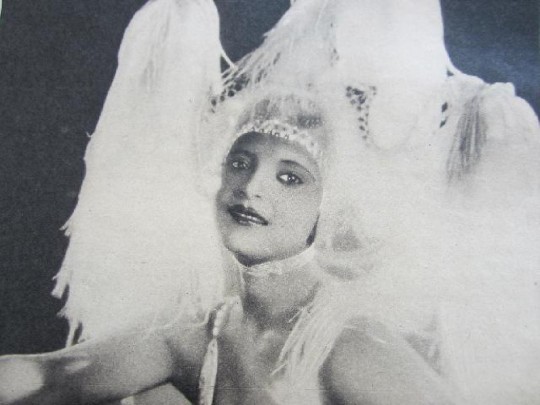
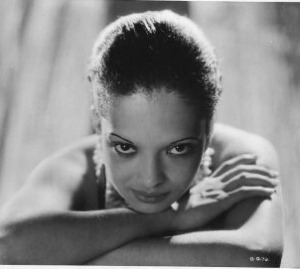


I felt like sharing some absolutely GORGEOUS photos of one of my favorite classic starlets from the golden era of film...the wonderful performer Ms. Nina Mae McKinney. I've written about Nina Mae before on DDASM, also reviewing a film of hers, a crime movie from the 1930s featuring an all-Black cast called "Gang Smashers" where she played an undercover policewoman.

Glamorous and vibrant, Nina Mae McKinney knocked down doors for the future generation of Black performers but never got her fair shakes in the industry herself. Not for a lack of talent, but a wall of discrimination in old Hollywood that often limited people's creativity and skill. But she was such a dynamo, nobody could truly hide her shine. I love her screen presence and may soon dive into a more extensive review of another one of her films, an early horror flick called "The Devil's Daughter" (voodoo mayhem!)


Check out her filmography here!
#nina mae mckinney#classic hollywood#old hollywood#Golden Era of Film#classic actresses#classic black actresses#women in film#women of color#actresses of color#black women in film#women in horror#black women in horror#pioneers#trailblazers#classic film#Old Movies#glamour girls#Divas Damsels & Smudged Mascara
5 notes
·
View notes
Text
Spotlight on Leigh Taylor-Young & Paula Kelly - The Women of “Soylent Green” (Dystopian Abuse, Displacement & Environmental Destruction - a Commentary On the 1973 Scifi Film)

Detective Thorn (Played by Charlton Heston): You’re a hell of a piece of furniture!
Shirl (Leigh Taylor-Young): Don’t talk to me like that. Please.
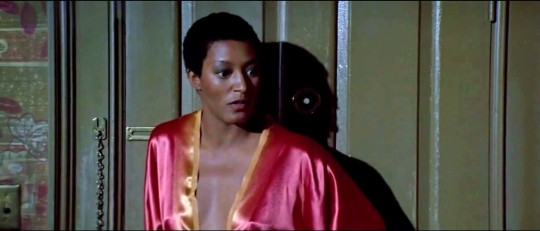
Detective Thorn: *Steals a precious spoon used to eat 150 dollar strawberry jam*
Martha (Paula Kelly): Son of a b*!&h!
Life is hard. It has always been hard. But in the future of Soylent Green, it is absolutely unbearable. It's drudgery. It's slow starvation except for a measly subsistence on a tasteless red, orange, yellow and soylent green cracker. It's flesh burning under a 365 heat. Machines operated by indifferent policemen to scoop folks up like refuse when food riots get a little out of control. There are ironically beautiful and clean euthanasia centers within a city that is as far removed from beauty and cleanliness as it can get, available for one’s "convenience" when it’s finally decided that life isn't worth a pot to piss in, and homeless shelters so jam-packed in this nightmarishly over-crowded New York City of 2022, that a person can barely breathe even in their precious few hours of sleep.
But then, there are the "furniture", the degrading name given to a select group of women who are virtually enslaved by a group of wealthy and upper-class men in exchange for hot water, fresh food, clean clothes and a place to sleep that is not a densely packed stairwell or alley. And while the name might be degrading, they have all the creature comforts that is in dire short supply and most women (and men) will never have in this nightmare New York. How would an upside-down society like this continue, and what sacrifices would these women be willing to make in order to survive?


These questions are asked in the brilliant scifi flick Soylent Green, starring Charlton Heston as intrepid police detective Thorn alongside the talented and glamorous actresses Leigh Taylor-Young as Shirl, the ‘furniture’ of a murdered rich man William Simonson and Paula Kelly as Martha, the ‘furniture’ of his shady bodyguard Tab Fielding. The first time I saw Soylent Green was years ago, and while I liked the scifi and action angles and seeing Charlton Heston kick bad-guy ass, I never really paid much attention to the powerful messages this movie was blaring from sexism and exploitation of women’s bodies to the destructive realities of there being only a tiny group of men clinging to all of the wealth and resources...the “one percent” vs. everybody else, if you will. For a motion picture coming out of the early 1970s, an era only a little over a decade removed from the conformity, oppression and suppression of the 1950s, a time when rich and powerful men ruled supreme over media, culture and pretty much everything else, this is what I view as a daring film. It is dark, very dark. It is cynical and biting in story arc, character development, tone and particularly its infamous ending. It was a point in Hollywood and American history in general, where people were openly questioning a part of the dangerous framework of the society they’d been living in and creatively, taking it further: wondering what our future would be like if the human race kept destroying the earth, holding other human beings back and contributing absolutely nothing to the safety of the world’s future generations.
As for the suppression of human beings, women, as in most scenarios, are viewed as the most vulnerable. The women in Soylent Green have made an exchange. They’ve traded themselves for a few years of survival and protection from the elements. However, they are allowed little freedom, no control over their bodies and when they can say “no” to men, (hence the name ‘furniture’ and men’s “right” to use at any time), and are forbidden from having children. They are women whose choice has been stolen. They are viewed as literal objects for personal enjoyment; their humanity has been whittled down to no more than how it can be of sexual pleasure to a tiny group of males.
The film opens to a bleak little tenement where Detective Thorn (Heston) lives with his crotchety best friend & co-worker, Sol.


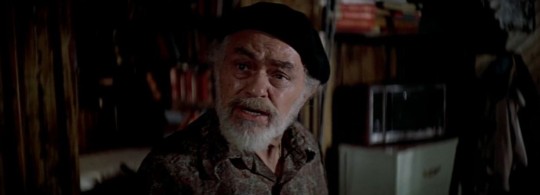
Sol is his research assistant on the cases Thorn’s assigned to, and is very good at his job, but is tired and frustrated and obsessed with waxing nostalgic about the good old days where people weren't roasting like chickens under endless heat and food wasn't reduced to a bag of crappy crackers or as Sol sputters, “tasteless crud!”. Their life is dismal but is actually fairly privileged compared to the rest of the city. Thorn's desperate to hold onto his job at all costs, so he can have access to the few perks he does get and Sol could be out on the streets altogether scraping for food and a place to sleep if he hadn't been lucky enough to land the assistant job. Things are awful but could be a lot worse. This dark, grimy existence is immediately put in contrast to a cool, luxurious high-rise apartment where elderly executive William Simonson and his "furniture” Shirl live. They have space where Thorn and Sol do not. They have comfortable furnishings. A clean home. Plenty of food, alcohol, hot running water, and even fun novelties like video games (a device that looks almost prehistoric to our digital-oriented eyes now, but in '73, must've been considered the height of cutting edge).


Things are pretty damn great for them. But there's a catch. Simonson has a target on his head and from the secretive, subdued way he's acting, it seems like he's aware of impending doom.

Pretty soon, it becomes obvious that Simonson knows something he shouldn't. It is something that could spell catastrophe for the Soylent Corporation, a mega-company which provides most of the food supply for the population and a company where Simonson is a member of the board. One thug with a meat-hook later, Simonson is dead on the floor of his deluxe apartment in the sky, refusing to even put up a fight, even defending this hit on his own life by making a bizarre remark to the confused young punk hired for the hit, that it is all necessary to "God".


All quite weird and unsettling, and the future immediately becomes frightening and unsure to Shirl. At this point, she has come to appreciate the fact that Simonson was a kind man who treated her more as a companion instead of a slave, showing her real compassion, something rare in their world of physical and sexual abuse.
Detective Thorn is assigned to this curious murder case (Charlton Heston in a complex, excellent performance) and is a man whom I viewed as more of a straight-forward hero when I was younger and had a more naive perspective. But now that I give Soylent an in-depth re-watch, I realize he was a character trapped in a culture of exploitation, benefiting and trying to benefit from it, all at the same time. His attitude towards Shirl is that of a man who knows his power as a police officer, as a person who has a few more privileges than the rest, and uses it, at least initially, as an opportunity to use her for his own satisfaction. When Simonson's found dead and the investigation's under way, Detective Thorn makes his way back to the luxury dwelling several times, the second time he takes full advantage of Shirl's status as "furniture” and coerces her to have sex with him. He never asks whether she has romantic or sexual interest in him; simply leads her to the dead man’s bedroom and begins taking his clothes off. And while Thorn doesn’t seem to be the type of man in this world to become violent at a refusal, it is clear that Shirl has been trained to never refuse a man. She has little free will, like all the other women closed up in this high-rise. The prison these women have been forced into is one more example of how this society has come to nothing. It’s exactly the type of message the movie was trying to convey about the degradation of humanity in an overcrowded future where all people have been turned into expendables.


On the other side of town, Simonson's bodyguard Tab Fielding is scheming. HIS "furniture" Martha is enjoying a nearly-200 buck jar of strawberry jam in secret. Who has strawberries anymore? A teeny tiny sliver of the elite, that's who. And a group Fielding (played by Chuck Connors quite devilishly), is dead set determined to join.


Paula Kelly, a multi-talented performer, a singer, actress AND dancer who a few years prior, co-starred in the magnetic Shirley McClaine musical "Sweet Charity", gives an understated but effective performance here.
There's definitely nothing to be singing about in this hell-hole, and Kelly hits the right notes making something very interesting from what is a small role. She went on to give powerful performances in other films with far bigger parts and more screentime, such as my personal favorite, 1989's "The Women of Brewster Place", but here in Soylent, as the survivor Martha, she truly makes the most out of the collection of scenes her character has, her performance melding very nicely with the dramatic heft of Heston himself.

Martha is a woman trapped in an exploitative situation just like Shirl but unfortunately, without the extra privileges. Because Fielding is a much poorer man, she doesn't have the wealth and abundance Shirl does, and unfortunately, has far less protection. The scene opens with her reclining in a red chair, quietly savoring spoonfuls of some precious strawberry preserves. Kelly's body language and expressions says it all. This is a treat of the highest order, something that Simonson and Shirl may have enjoyed on a regular basis, but for the bodyguard Fielding and Martha, something that is almost equivalent to a tiny pot of gold. The bold colors of the red chair, alongside the eating of the red strawberries almost seems as if this may have been an intentional stylistic choice regarding the blood that Fielding the bodyguard caused to be spilled, a betrayal he committed so he could obtain his own piece of luxury.
The setting for Tab Fielding and Martha Phillips’ residence is in juxtaposition to Shirl and Simonson’s high-rise paradise, yet considered a step up from Thorn and Sol's hole.

You can tell the struggle for any amount of privilege, any at ALL, is jagged sharp, from the impressed, envious glances Thorn shoots Tab and Martha's tenement space.

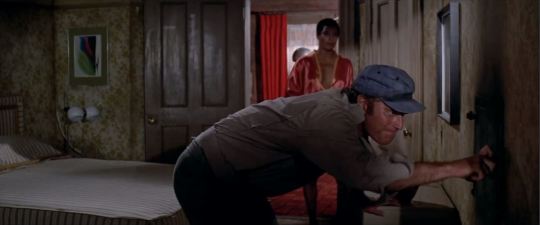
Thorn is already on to Tab Fielding's shadiness, and is poking around his place looking for clues and of course, anything else he can get his hands on. Lest the viewer forgets, he has access to any “furniture” he lays his eyes on as a police officer of this highly corrupt 21st century force--reminding Martha that he "if he had had the time" he would've asked for her too. This is all done in a casual manner as if a cup of coffee and plate of cookies was the offering instead of a woman's body, but in 2022 New York, a woman is just another item.

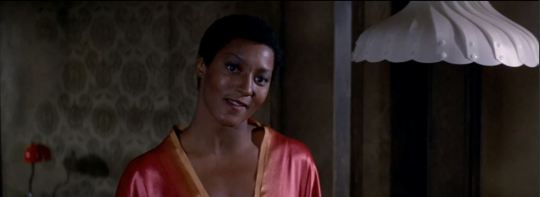
Like the temperature of the unbearable heat of the film's environment, the temperature keeps getting cranked up on all of the main characters: Detective Thorn's investigation has caught the attention of the powers that be, who at first try to kick him off of the case and close it permanently then when he refuses to play their games, sics the same desperate assassin on him who killed Simonson for a few coins. At the same time, the pressure is turned up on Simonson's bodyguard Tab Fielding who betrayed him in the first place, by knowing about the impending death and leaving his apartment ahead of time. There is also his "furniture" Martha (Kelly) who is simply caught in the middle of everything, desperate herself for a few extra privileges, and the late Simonson's "furniture", Shirl, who is panicking at the prospect of being abused or thrown out on the hellish streets, after the man who she has viewed as a protector, has been removed from the picture.
The violence and fear Shirl is so afraid of is shown in one chilling scene when at the late Simonson's apartment, a group of her friends, also "furniture", are gathered for one rare moment of peace, away from the men who dominate them, only to be attacked by a vile little authoritarian Charles, the manager of the fancy high-rise the city's rich men have taken up residence in. He punches, slaps and snarls at these women with the violence and venom you'd see between two drunk dudes in a barroom brawl, slinging them around like garbage bags and relishing in the few moments of power over them he's been able to acquire without the eyes of his tenants on him.


In one scene, Thorn comes in from the bedroom with Shirl and gets angry at Charles' blatant hatred, hypocritically playing the hero of the moment. It's to the credit of Charlton Heston's phenomenal acting and his total commitment to the bravado of Thorn, that that hypocrisy isn’t too blatant, however. Again, this is a brilliant example of how in this future, men like him are the manipulated and the manipulator--recognizing on the surface certain wrong actions from right, but ultimately blind to how degraded they've become because of the degradation of the society around them.


The levels of misery everybody has been trapped in intersect, and the true nature of this society is exposed when both Thorn and his friend/associate Sol discover something wicked and depraved about the reigning food source Soylent.
What gives Soylent its edge is the fact that this is a film where so few of the characters (except the victimized mistresses), have their hands clean. The world is clearly winding to an end and the people who aren't being ground into the dust are pillaging the scraps that are left. In my opinion, there aren't any 100% heroes here, but people like Thorn and Sol, who are waking up to the truth of their surroundings. That's how I've come to approach the film and its many insidious layers.That truth that Thorn and Sol expose, is astounding both in its desperation to keep the charade of society going and the depth of contempt the elites have for the population.
Within this world of scarcity and loss, women like Shirl and Martha CAN access some of the hoarded resources the power brokers have accumulated but it's all contingent on how long they're willing to play by the rules of a game that have been rigged for them to lose.

What I really thought was fascinating was the meaning of Thorn and Shirl's relationship. Despite the lopsided power dynamics between the two--the fact that he really DOES have the control and because of her subservient position in this society, she is forced to accept it--he tries to protect her from the dangerous forces coming after him during his horrific investigation of Simonson's murder and the true ingredient of the soylent food everyone relies on. The question may come up for viewers while watching the movie: does he love her? Or, and this is my interpretation, is she simply a representation to him of all the comforts he feels he's been denied?

I'm not sure that the writers of this film ever truly meant to portray an actual "romance". Because it's not, not to me at least. These are two people in a fucked-up situation where one has been marked as inferior and obedient to men for years to come. Thorn is a man who has been operating out of ignorance and self-service throughout his professional life; his ignorance to what is actual normalcy is demonstrated from the first few scenes where the elderly Sol tries to tell him of how the world functioned before the insanity of the times they're in now. Thorn is ripped out of his slumber when his entire worldview comes under question. The ground underneath him is figuratively shaking, and all the purpose and shreds of stability he thought were present in this society is upended. The deeper he falls into secrecy, terror, and lies, the more confused and angered he gets. It seems that Shirl is a woman in his life, with all of the luxury and security she represents in her apartment in the sky, that he grabs on to for his own comfort. However, Shirl is always on a quest for security of her own and Thorn is the person she in turn, grabs on to to launch herself out of potential violence and pain.

Martha is shown as a woman who doesn't have the access for understanding and compassion, albeit limited, Shirl receives, which is a huge and detailed conversation on its own relating to race and class. She is unfairly brutalized by Thorn in one scene simply to trigger Fielding into a reaction and is treated with a type of contempt that Shirl is seen as being somewhat sheltered from even in her own frightening circumstances. So even in the world of "furniture", aka mistresses for hire, some are treated better than others. Shirl 'belongs' to a rich man, Martha 'belongs' to the servant of a rich man. The men's status is not only transferred to the women, but has the potential to improve or devastate their already-damaged existences.
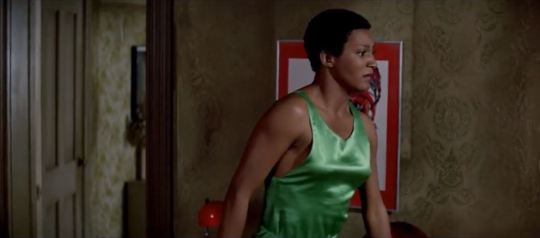

In this future of NYC, ALL of the catastrophe of society leads up to what is propped up as the ultimate solution to this mess of human degradation: the human euthanasia centers. As I said at the beginning, they are the most beautiful and modern buildings in all of the city. They are a glowing antiseptic beacon to the tired, the hungry, the plain worn-out...as the old researcher Sol feels himself to be at the discovery of the terrible secret which caused the rich man Simonson’s murder in the first place.
This mainstreaming, even commodification, of collective suicide and quite frankly, a high-key form of eugenics, (the encouragement of death for the poor and many of the elderly while the top resources like meat and fresh vegetables and clean, spacious housing is greedily hoarded by rich predominantly White males), is an alarming reminder of just how worthless life of the 99% has become. If enslavement of young women didn't bring it home, the death centers are the final reminder.


(Sol being welcomed to the first day of the rest of his afterlife)
What is in the final frames of Soylent Green has been parodied, satirized and memed countless times over the years. It's become a part of campy pop culture and quite frankly, the movie’s twist ending was not a part of the original novel Make Room! Make Room! which focused on overpopulation and its disastrous results.
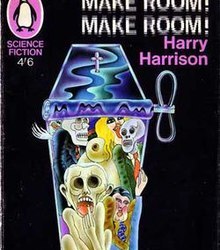
BUT in the context of the movie, when approached from the perspective of how the elites would abuse and exploit the desperation of the masses, the dismal, grisly end really does make sense. I'll just sum it up like this: the rich “recycle” the poor. Heston's character Thorn ultimately has to leave behind whatever’s in his heart towards Shirl and flee for his life after finding out the secrets of the elites and the ending of the film is left intentionally ambiguous as he is shot and carted off, his bloody hand reaching towards the sky, him shrieking this secret at the poor surrounding him. You don't know whether they understand what the hell he's talking about, whether they think he's just another mad person in the madhouse of Manhattan or more frighteningly, whether they are too broken to even care at this point.
That's the beauty of the movie's writing. There are no quick answers. There are certainly no quick solutions. Just a peek into a future where corruption has won out and everyone pays the price.
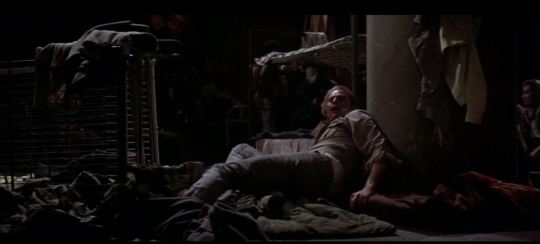
Watch Soylent Green and come to your own conclusions. Try to approach the film with a fresh perspective that isn’t necessarily influenced by parody. You'll see that the movie was a lot deeper and more meaningful than a number of people have given it credit for.

#Divas Damsels & Smudged Mascara#leigh taylor young#paula kelly#charlton heston#edward g robinson#dystopia#science fiction#apocalypti#overpopulation#climate change#global warming#environment#destruction#crowded#city#new york#manhattan#starvation#soylent green#soylent#resources#elite#poor#corruption#manipulation#misogyny#mistresses#furniture
22 notes
·
View notes
Photo
Flawless.

Portrait of Veronica Lake, 1942
6K notes
·
View notes
Photo









“Being a sex symbol is a heavy load to carry, especially when one is tired, hurt and bewildered.” - Clara Bow
Dorothy Dandridge, Marilyn Monroe, Judy Garland, Lana Turner, Clara Bow, Veronica Lake, Jean Harlow, Rita Hayworth, Hedy Lamarr.
4K notes
·
View notes
Photo
Jodie Foster’s finest performance, in my opinion. Clarice Starling was one of the best characters in horror cinema.


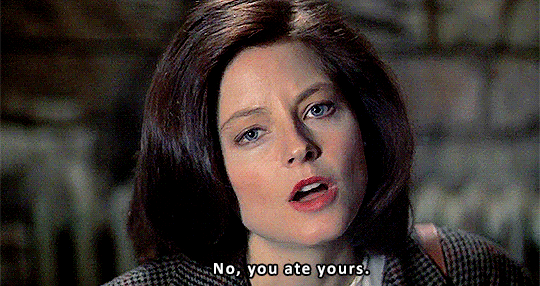
The Silence Of The Lambs
Directed by Jonathan Demme (1991)
25K notes
·
View notes
Photo
An icon of dignity and glamour. I love Bette!

Bette Davis
803 notes
·
View notes
Photo
This is lovely!

Ingrid Bergman (as Herself), 1983, Andy Warhol
https://www.wikiart.org/en/andy-warhol/ingrid-bergman-as-herself-1
135 notes
·
View notes
Photo
I saw this film on Turner Classic Movies and now I’m currently obsessed with Lillian Gish and must see her entire filmography!
She gave a heartbreaking, passionate and utterly poignant performance as a woman who sacrifices everything, even her own body and vitality, for love. Utterly tragic, beautiful film.
youtube


Lillian Gish in La Bohème (1926)
#reblogs#lillian gish#la boheme#turner classic movies#silent film#classic film#powerhouse performances#brilliant actresses#classic actresses
2K notes
·
View notes
Photo
Will put this on my ‘to-watch’ list!

Asylum | Roy Ward Baker | 1972
384 notes
·
View notes
Text
What a superb post!
"The Charm School"
I think it’s gonna be a good thing for television!

(S3;E15 ~ January 25, 1954) Directed by William Asher. Written by Jess Oppenheimer, Madelyn Pugh and Bob Carroll, Jr. Filmed December 10, 1953 at Ren-Mar Studios. It was the 81st episode filmed.
Synopsis ~ After seeing the boys give a pretty girl the eye, Lucy and Ethel decide to go to charm school.

For viewers, the episode is probably best remembered for a guest appearance by Natalie Schafer as Charm School proprietress Phoebe Emerson. Born in 1900 in Red Bank, New Jersey, Schafer went on to fame as Mrs. ‘Lovey’ Howell on the long-running sitcom “Gilligan’s Island” (1964-67).
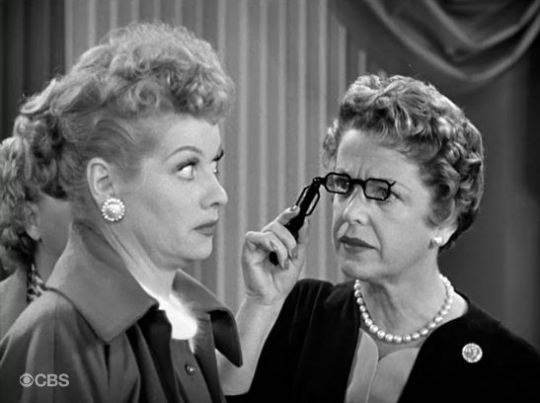
The week before this episode first aired, Schafer made an appearance on CBS TV’s "Topper” as a character named (coincidentally) Mrs. Vance. Two years later Schafer co-starred in Lucy and Desi’s film Forever, Darling (1956). Additionally, she starred in 20 Broadway shows. She died in 1991. Curiously, even in the restored DVD, Shafer and the other supporting cast are not announced over the final credits.
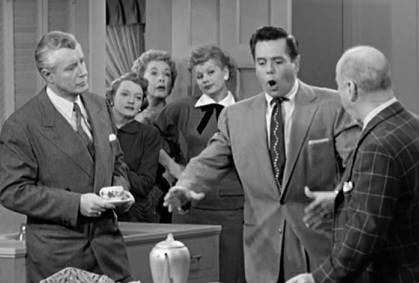
Louann and Bill Hall, friends of the Ricardos, make their first and last appearance in this episode. The couple is played by Vivi Janiss and Tyler McVey, both of whom were veteran character actors. McVey played hundreds of roles on TV and film, dozens of them sheriffs. He went on to play bit parts in three more “I Love Lucy” episodes. Janiss was previously seen as one of the club women in “No Children Allowed” (S2;E22). On Broadway, she introduced the song “I Like the Likes of You” in Ziegfeld Follies of 1934. Her first husband, Robert Cummings, later appeared on "The Lucy Show.”

The episode also featured fashion model and actress Eve Whitney, who used her own name for her character. She had appeared in four films with Lucille Ball from 1943 to 1945. Her real-life husband Eddie Maxwell wrote the lyrics to the song "There’s a Brand-New Baby in Our House” which was commercially released by Desi Arnaz. After this episode, Whitney did one more acting job and then retired from show business to become a real estate agent. Her ‘date’ for the Ricardo’s party is Tom Williams, played by Maurice Hill. This is Hill’s one and only appearance on the series.
The episode opens with a small gathering at the Ricardo apartment where the men and women are in two different rooms. Luann explains:
“We like talking about babies and clothes and recipes and they like to talk about sports and politics.”
This statement broadly encompasses gender roles in 1950s America. The desire to break through these role restrictions is the basis for many “I Love Lucy” story lines.
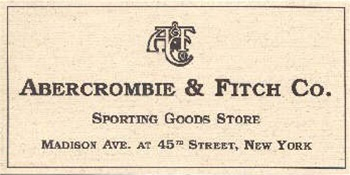
When Lucy likens men and women to goats and sheep, Ethel remarks: “Maybe we’d better go down to Abercrombie & Fitch and see if they sell goat-mating calls.” Although A&F are known today for apparel for young people (and their generally provocative advertising), the retailer was first opened in 1892 as a sporting goods store with a flagship location on Madison Avenue.

In the boys conversation Desi Arnaz ad-libs a story about golf game - at California’s Thunderbird Country Club and Golf Course - 2,500 miles from New York City.
RICKY: “You know, the whole membership of the Thunderbird Club was around the 18th hole. All I had to do was make this measly two-foot putt to win, and I missed it!
Lucille Ball and husband Desi Arnaz were early celebrity residents of Rancho Mirage, with a home at Thunderbird Country Club built in 1951, the same year “I Love Lucy” debuted. Desi was a keen golfer and Lucille and he spent a lot of their free time in their Rancho Mirage home facing the ninth and 18th fairways. Desi made a similar slip when he wore a Thunderbird Club hat in “The Golf Game” (S3;E30).

At the party, the men talk about how soon color might be introduced on television.
BILL: “Well, there are two schools of thought on that matter. Some people think it’s just around the corner. Others think it’s gonna be a year or two.”
In reality, it was just six months away. Television’s first prime time network color series was “The Marriage,” a situation comedy broadcast live by NBC in the summer of 1954. NBC was owned by RCA, who led in the technology to broadcast color programming. CBS was developing their own technology, so was reluctant to get on the bandwagon. It wasn’t until 1962 that Lucille Ball was seen in color on CBS, and then not even on her own program.
Despite real-life conversations on the subject between producers and CBS, “I Love Lucy” was never shot or broadcast in color. Jess Oppenheimer said that color wasn’t necessary for a comedy show, unless it enhanced the comedy. Also, in 1954 color television sets were very expensive (about $1,200) and very few Americans had them. Ricky says he read an article by Harry Ackerman. Ackerman was the TV producer who first encouraged the filming of “I Love Lucy” in front of a live studio audience. He even appeared as a Network Sponsor in “The Audition” (S1;E6).
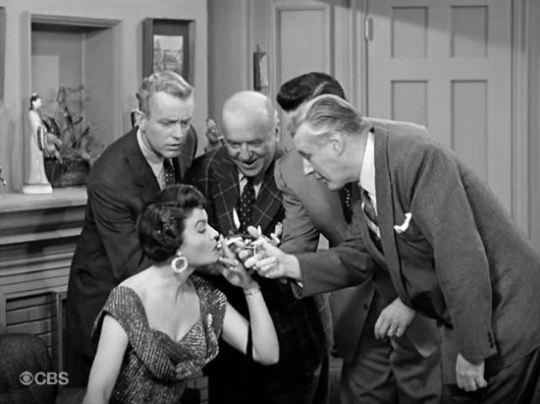
As a group, the men and women try talking about Tom Williams (Maurice Hill) - but the conversation leads right back to sports when someone mentions the last time they saw Tom was at the fights at Madison Square Garden.

When they return to the kitchen after their failed attempt at mixed gender conversation, the topic turns to the sport of kings - prize fighting, something the boys were frequently obsessed with on the show. The last scene of the very first aired episode “The Girls Want to Go to a Nightclub” (S1;E2) was set at the fights. Also, in “Ricky and Fred Are TV Fans” (S2;E30, above), the boys are glued to the television to watch a match between Murphy and The Kid.

Here, real life bouts between Ezzard Charles, ‘Jersey Joe’ Walcott and Rex Layne are mentioned. Fred even brings up Jack Dempsey and Bob Fitzsimmons, both of whom were dead by the time Fred was barely twenty. During the series, Fred is mentioned as being a Golden Gloves boxer, so it stands to reason he would know his pugilistic history.
Oops! Desi originally ad-libs about a fight between Charles and Layne before correcting himself (with Bill Frawley’s help) that it was Charles and Walcott. Perhaps Desi was thinking of Charles Lane, a character actor that had already appeared on the series twice and would go to make several more appearances.

The square plastic cookie jar on the kitchen counter (likely red) was made by Lusterware.

This ad from 1954 shows that it is part of a larger set, priced at $9.95.

“Bad morning!” Lucy catches the toast - two pieces - as they discuss the events of the previous evening. Seeing an ad for the same charm school that Eve Whitney attended, Lucy and Ethel hatch a plan.

Hit Your Marks! While Lucy and Ethel are at the charm school, when they’re standing in front of Miss Emerson’s desk, in the wide shots a small tape mark can be seen on the floor in front of Lucy’s feet. Then when Lucy and Ethel are in sweatpants two small tape marks can be seen on the floor, and when Ethel walks to the other side of the room to join Lucy, there’s another tape mark which Vivian even looks down at to confirm her foot’s position.
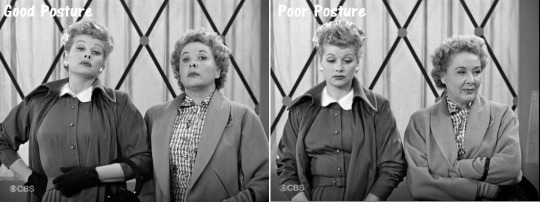
Lucy and Ethel visit Phoebe Emerson Charm School for their free Beauty Analysis and CQ (Charm Quotient) check-up. The analysis grades on four points: skin & make-up, hair, voice, and posture.

Miss Emerson scores Lucy a 30 and Ethel a 32 out of 100.
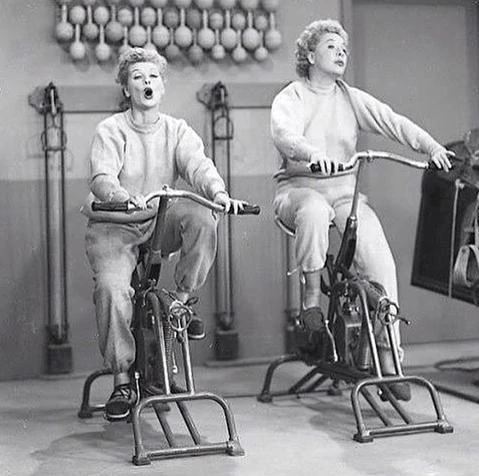

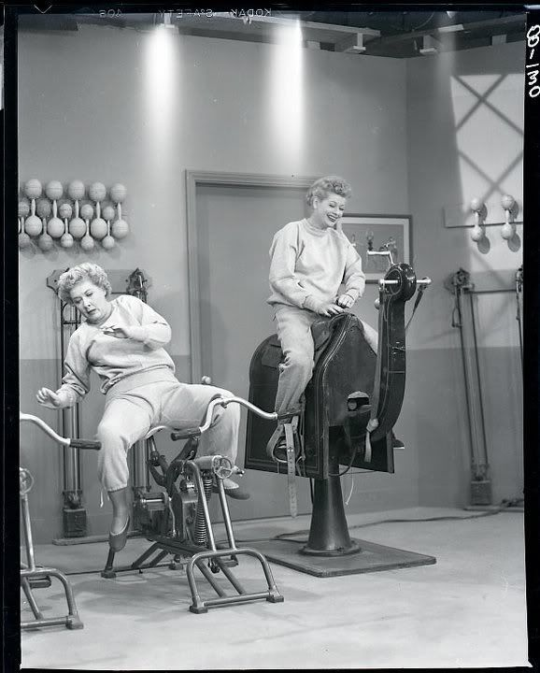
Despite archival photographs of Lucy and Ethel using the exercise equipment at the Charm School, the footage was not used in the final cut. Going into commercial, the theme music swells and you can just hear Ethel say something and Miss Emerson look over to Ethel - but by then the animation has taken over. There was obviously more to the scene, but it was cut for time. Too bad, as it looks like a lot of laughs!

Never one to let go of a funny idea, Lucy Carmichael and the Countess (Ann Sothern) wore matching sweat suits and used the exercise equipment in a 1965 episode of “The Lucy Show.”

The slinky black dress Lucy wears to impress Ricky will be worn again when she tries to 'vamp’ Cousin Ernie Ford as the 'wicked city woman’ in “Tennessee Ernie Visits” (S3;E28).

Ethel looks as glamorous as she ever has or will, which must have pleased Vivian Vance, who was required to remain 'frumpy’ for her role.

Ricky is dressed as as a French courtier from the 17th century, while Fred resembles a cross between Mr. Peanut and Mr. Monopoly.

Lucy will get overly dolled-up again in “Country Club Dance” (S6;E25) where she is also in a dress so tight she can’t sit down, and Ethel has her hair pulled back tight.

The Franklin Mint and the Bradford Exchange issues collectible figures based on the episode.
Mrs. Trumbull is mentioned, but not seen. Also not appearing or mentioned is Little Ricky.
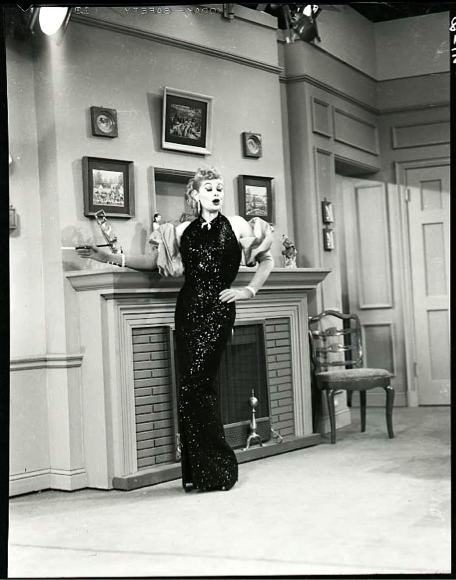
#i love lucy#lucille ball#Gender Roles#1950s#women in television#women in comedy#icons#legends#reblogs
26 notes
·
View notes
Photo
What a stunner of an image. I still have not watched this film and I am a HUGE Dorothy Dandridge fan! Gotta catch it!

Dorothy Dandridge in Porgy and Bess, 1959
2K notes
·
View notes
Photo

Anita Ekberg by Yul Brynner, 1956
144 notes
·
View notes